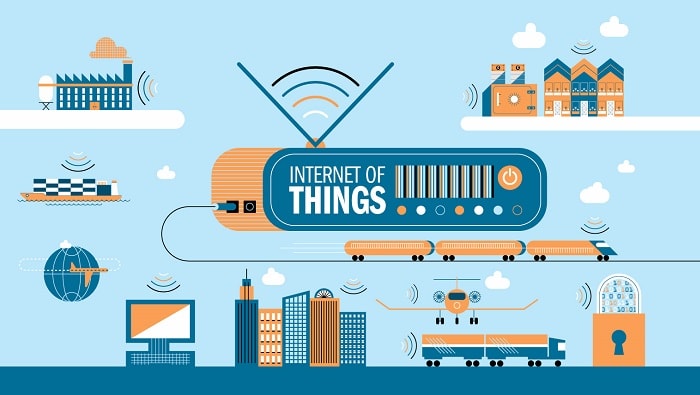Connected objects are playing an increasing role in our daily lives. They help us to better manage our homes, our movements and our health, and also facilitate the digital transformation of businesses. These Internet-enabled devices are part of a network called the Internet of Things (“IoT”).
Exponential development
The Internet of Things refers to the exchange of data from real-world machines and sensors that communicate via the Internet.
The IoT therefore constitutes the third digital revolution, after telecommunications and the Internet, enabling interaction between the digital and physical worlds: between a human and an object, and from machine to machine.
750 million new connected objects were used worldwide in 2016. It is estimated that close to 21 billion connected objects will be in use by 2020. (Source: Gartner)
These communications contribute greatly to the soaring volume of data circulating in the networks, especially since the number of connected objects owned and used for both private and professional purposes has multiplied exponentially in recent years.
173 million active connections in the Asia-Pacific region in 2016, including 105 million in China, 21 million in Japan, 12 million in Indonesia, and 8 million in South Korea; it is predicted that there will be 550 million active connections in the Asia-Pacific region by 2020. 48.5 million active connections in the five major IoT markets (France, Italy, United Kingdom, Germany, and Spain); this is predicted to reach 118 million by 2020
A wealth of information which benefits all human activities
Both the IoT and the corresponding increase in the amount of data generated worldwide make it possible to better anticipate, regulate, and optimize more and more facets of human activity, including cities, transport, agriculture and energy, just to give some examples. The IoT therefore represents a promise of progress for individuals, society, and the planet. The collection of data from human activity allows for a more accurate analysis of needs and, ultimately, improved efficiency across all areas of activity.
eHealth
We can measure our physical activity and heart rate at a glance using connected watches or bracelets – these “wearables” care for our well-being. These objects also have many uses in e-health, especially for the chronically ill.
Smart home
For private individuals, the IoT marks another step forward in the connected home. The 161 million smart homes already built automatically determine the optimal settings for the temperature, for air conditioning and for lighting, among other things, and allow the owners to control their homes and equipment from their smartphones.
Smart cities
Communities are also experiencing the benefits of the boom in the number of connected objects, which will allow new services to be offered to citizens by working in collaboration with key stakeholders in city management. Real-time analysis of passenger volumes or the geolocation of vehicles enables easy movement, while smart buildings adjust their energy consumption according to the activity of their occupants (smart grids).
“Smartseille”, the Marseille ecodistrict of the future
As the first digital ecodistrict in France, Marseille will have a very high speed broadband network, providing innovative digital services to its residents.
Connected car
Car manufacturers are developing connected and interactive vehicles. This embedded intelligence will allow the car to be controlled remotely and for data to be transmitted regarding the driver’s behavior or the wear and tear of vehicle parts – useful information for the owner and the manufacturer so they can plan for any necessary repairs and enhance driver safety.
What will the connected car of the future look like?
Some of the features that the car of the future could offer include autonomous driving, gesture-based activation, and holographic technologies.
Industry 4.0
Connected objects play a key role in improving the productivity of industrial processes, especially through the advances in automation, network communication with external stakeholders (suppliers, customers), and predictive maintenance.
The IoT allows manufacturers to collect data to analyze the actual use of their products, understand how they are used by customers, and identify the most frequently used functions. Adapted infrastructures to promote responsible consumption
In order to deliver on the promises made, the IoT must be able to rely on strong network infrastructures. Telecom operators are working to deploy dedicated low-speed networks (LoRa®, LTE-M) that consume less energy, and also to standardize 5G, the mobile network of the future that will provide the bandwidth required for mass exchange of information.
These technologies ensure that the Internet of Things takes environmental considerations into account by offering a connection that is low in cost and low in energy consumption over long distances.
Native security for connected objects?
66% of customers are concerned about the security of their personal data as a result of the IoT. (Source: BullGuard study, March 2016)
Data security and confidentiality is a key issue in the Internet of Things, as any connected object may be vulnerable to cyber-attacks. Manufacturers must realize the importance of securing connected objects from the very early stages of the design process. Protecting the identity and integrity of IoT devices, as well as backups and data usage are all essential. Downstream, manufacturers and operators should support end-users by helping them to better understand how to secure their own objects.




















